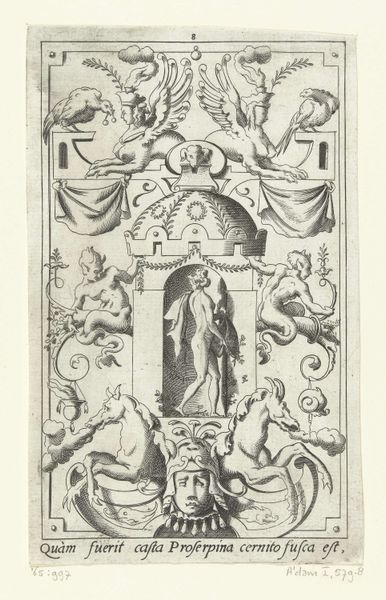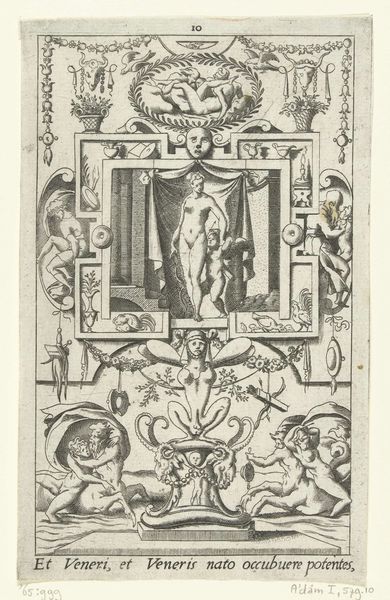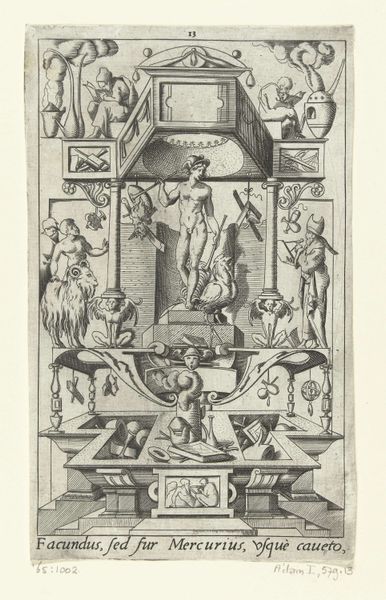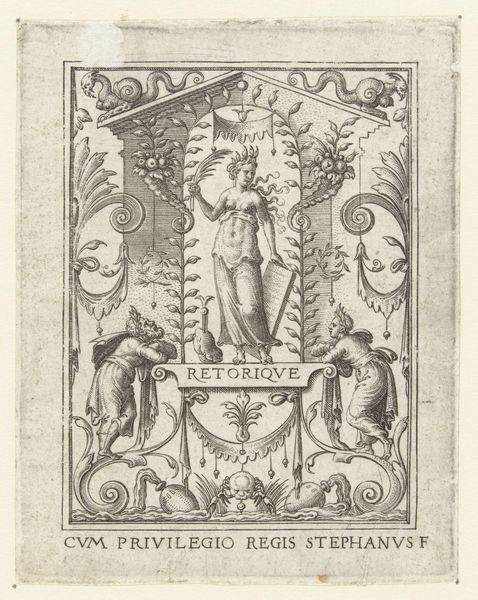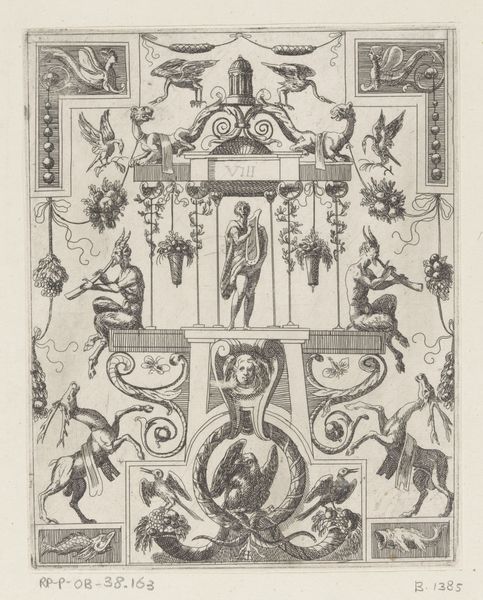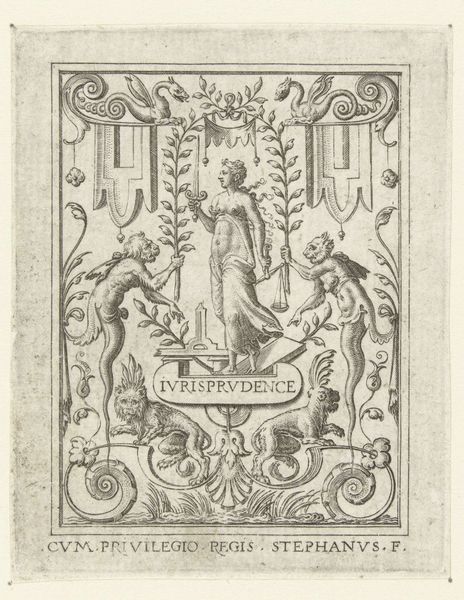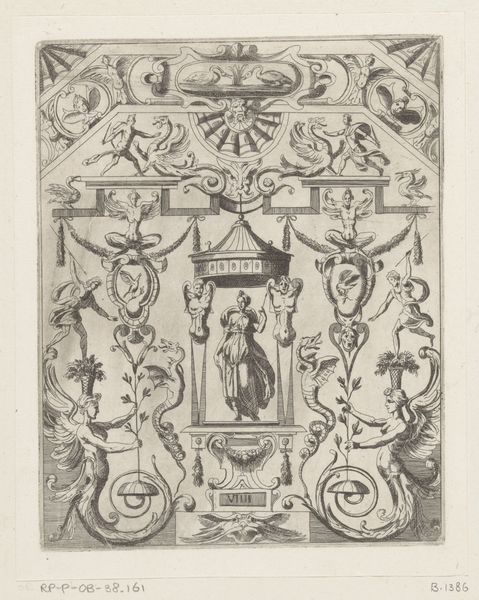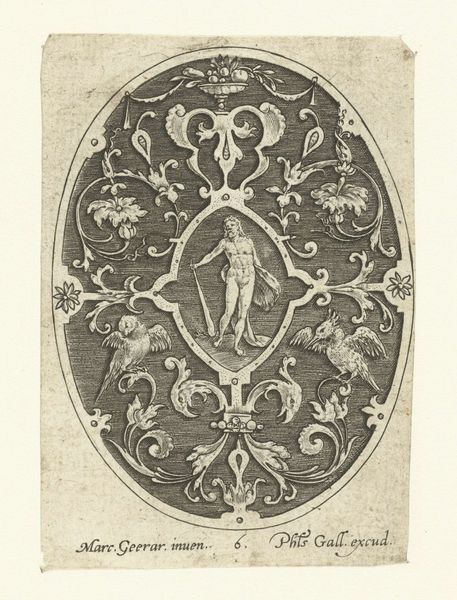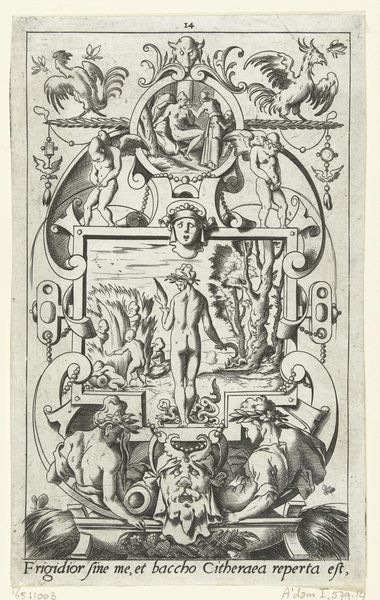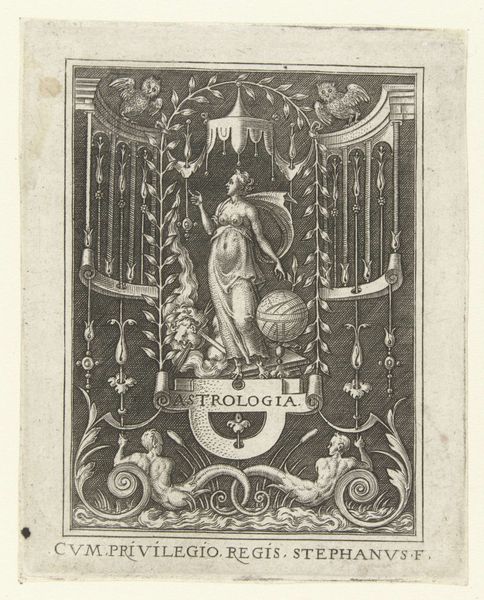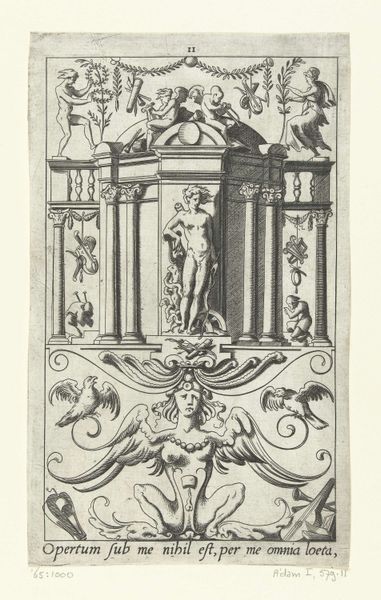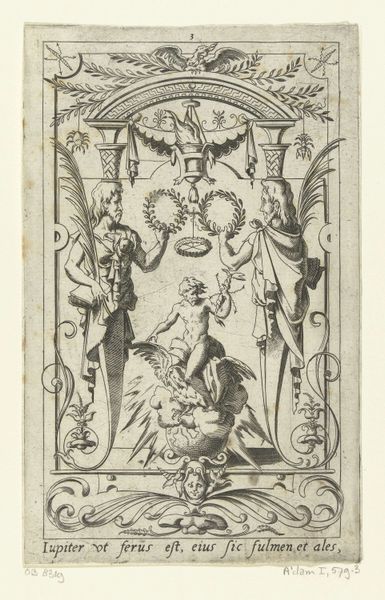
print, ink, engraving
#
pen drawing
# print
#
pen illustration
#
old engraving style
#
figuration
#
ink line art
#
11_renaissance
#
ink
#
pen-ink sketch
#
line
#
pen work
#
engraving
Dimensions: height 173 mm, width 106 mm
Copyright: Rijks Museum: Open Domain
Curator: This print, held here at the Rijksmuseum, is entitled "Ariadne in een ovaal." It's an engraving by René Boyvin, created sometime between 1551 and 1580. What's your immediate impression? Editor: It strikes me as incredibly ornate. The composition, packed as it is, leans heavily on curvilinear forms. The central oval containing Ariadne is almost overwhelmed by the decorative elements. The linework is exquisite, a testament to the engraver's skill, but it's nearly too busy. Curator: I see that, and I think the richness of the ornamentation tells us something. The oval framing Ariadne recalls ancient cameos and engraved gems—objects that signified wealth, status, and taste during the Renaissance. These emblems spoke to a shared understanding of classical antiquity, and possessing that knowledge elevated one’s position in society. Editor: Yes, I note how Boyvin uses line to delineate form, texture, and spatial depth. Observe the differences in the linework employed to represent various materials like stone versus the texture of flesh. It's a veritable feast of visual information encoded by these delicate marks. And consider that everything stems from the single burin creating those lines. Curator: Absolutely, the technical virtuosity is remarkable. But consider also Ariadne herself. Deserted by Theseus on Naxos, she's traditionally depicted in a state of grief and abandonment. Here, however, she appears self-possessed, almost defiant, anticipating her divine union with Bacchus. The engraving's Latin inscription hints at this, suggesting that youth isn't always the best advisor, hinting towards her fate. Editor: A very persuasive interpretation. And if we continue our visual deconstruction, notice the balance Boyvin establishes. Despite the intense decoration, a symmetry binds the piece together—look at the opposing beasts flanking the central oval. Though dynamic in their postures, they create a visual anchor that provides a sense of stability amidst all of the swirls and flourishes. Curator: Exactly. The various animal figures that adorn the space—the goat, the fantastic creatures above, all drawn in a swirling fashion—suggest the abundance and celebratory spirit associated with Bacchus and the promise of a renewal for Ariadne, even following her deep grief. Editor: So ultimately, it's through this careful interplay of compositional elements and masterful lines that Boyvin constructs this message, transforming an intensely decorative engraving into a potent symbolic representation. It's rather brilliant. Curator: I agree. It truly shows us how artists and designers used mythological narrative to connect the viewers of their era to enduring ideals and also how those stories themselves change.
Comments
No comments
Be the first to comment and join the conversation on the ultimate creative platform.
